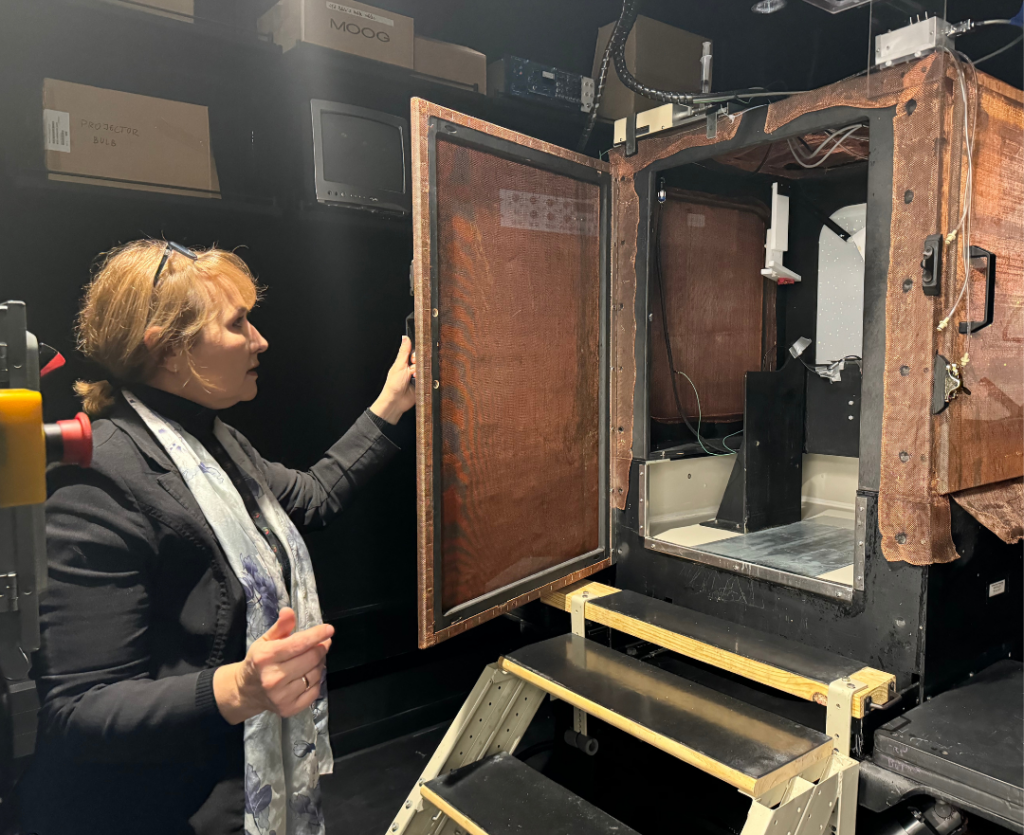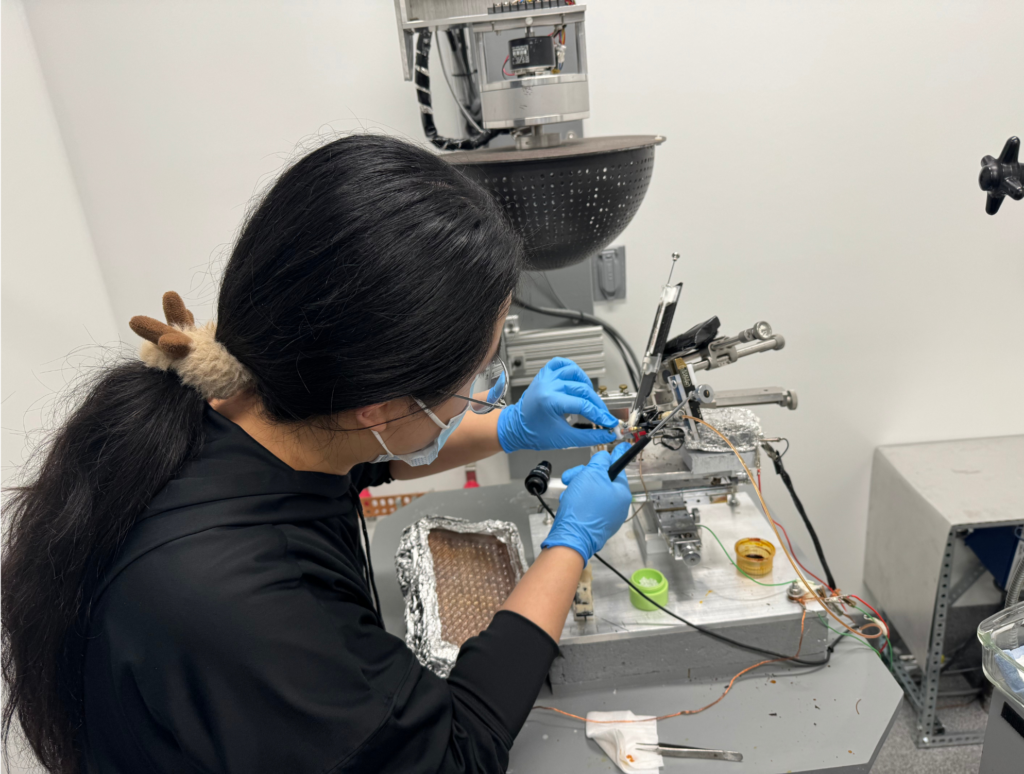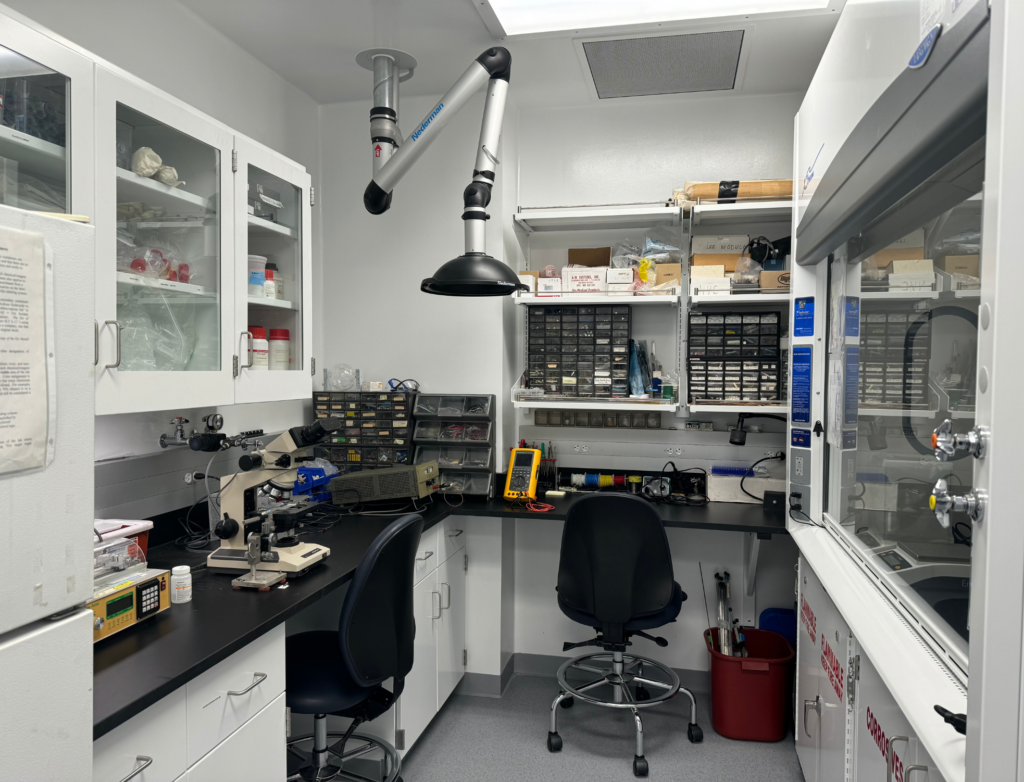Assistant Professor Tatyana Yakusheva, PhD, and her team finally settled in their new research lab and work area in the new Jeffrey T. Fort Neuroscience Research Building (NRB), one of the world’s largest neuroscience research buildings. This 11-story building houses hundreds of scientists across the neuroscience research spectrum.
The Yakusheva Lab was the first to move to the NRB before construction was completed. They started the big move from the East McDonnell Research Building in Aug. 2023, but the planning process has spanned almost two years. “There were many meetings to bring this new lab together,” says Yakusheva.
They now have a laboratory space dedicated to working with two animal species: mice and non-human primates (NHP). On the 10th floor of NRB is a laboratory for experiments on non-human primates using a motion platform with six degrees of freedom (MOOG 6DOF/24/1800; Moog, East Aurora, NY). This system can deliver rotational (pitch, roll, and yaw) and translational motion in 3D.

The mouse lab space is located on the 6th floor and has two experimental rooms. One room has a laser projection system, an optokinetic system, and rotating chairs for vestibular stimulation.
“We were very excited about the move, but as a scientist, it was tough for us to imagine what was going to happen in a new place. Many factors can affect your experiments, such as electrical noise and building noise,” says Yakusheva, “but the best part about the move is coming together with other neuroscientists and researchers under one roof.”
Her research aims to understand spatial navigation and balance in the normal and diseased brain, aiming to pave the way toward finding cures and therapies for rehabilitation. Specifically, they study the role of the vestibulocerebellum in spatial navigation by using diverse experimental techniques, including measures of individual neuron activity, pharmacology, behavioral neuroscience, and mouse genetics.
Yakusheva’s team recently initiated a collaborative project with colleagues from Cleveland Medical Center that aims to understand the mechanisms underlying the positive effect of deep brain stimulation on motor skills and balance in Parkinson’s disease (PD) patients.

Studying the role of the vestibular system and the cerebellum in spatial navigation deficits in PD patients and animal models will potentially lead to improvement in the treatment of PD patients. “We are excited to have this opportunity for this collaborative project with Dr. Shaikh that could potentially bridge the gap between basic research findings and practical applications in clinical and real-world settings,” says Yakusheva.
The Yakusheva Lab includes Assistant Professor Tatyana A. Yakusheva, PhD as primary investigator, Laboratory Supervisor Fanetta Hampton, Research Engineer Valentin Militchin, Laboratory Technician Chuzhen Yin, and medical student Derick Cutinha and collaborations with scientific teams within and outside the US.
The research conducted in their lab will not only help patients but will help unlock principles fundamental to the workings of the nervous system. This will lead to new therapies, diagnostic tools, and drugs that can improve the lives of people around the globe.
